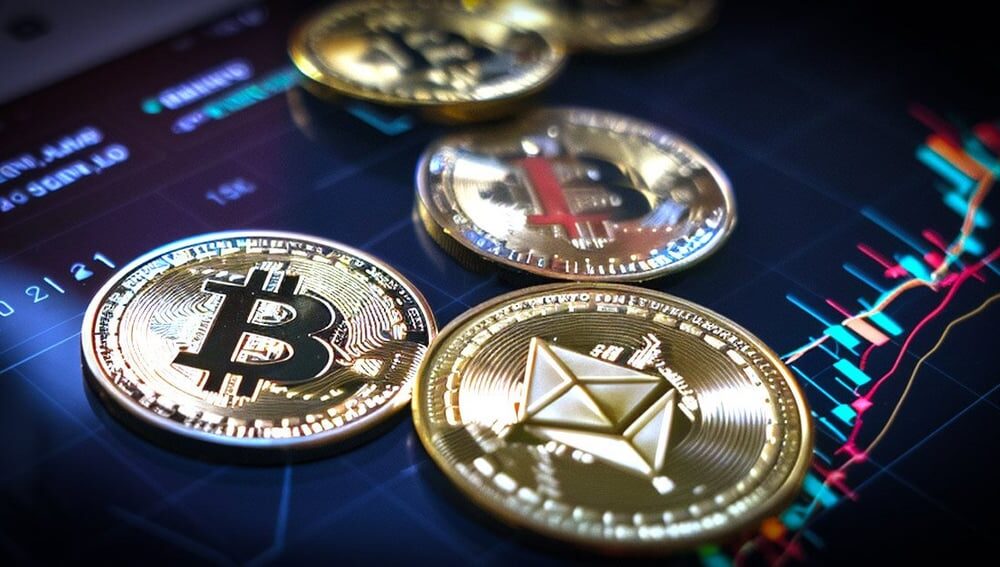Consider the snow leopard. Panthera uncia sports some of the most effective camouflage in the animal kingdom, its white coat with gray and black spots blending in perfectly with the rocky, snowy Himalayan landscape it inhabits. It’s known as “the ghost of the mountains,” seeming to appear out of thin air on the rare occasions it is seen in the wild.
There’s an equivalent phenomenon in global affairs: under-the-radar trends and events that elude even the most seasoned observer. When their effect on world affairs eventually becomes apparent, they may seem to have come out of nowhere. But these “snow leopards” were there all along. Trends slowly gathering momentum while the crisis du jour dominates headlines, technological developments whose real-world application is still theoretical, known but underrated risks—all of these phenomena have the power to reshape the future. Some already are.
Any forecast of the future needs to account for these snow leopards. As we brought together experts across the for our annual look into the future, our next-generation staff took on the challenge of spotting the hard to spot. They surveyed the world around them for overlooked risks, trawled scientific journals and the websites of obscure government departments, and came up with a list of potentially world-changing trends and developments.
In the year to come and beyond, keep an eye on these six snow leopards.
When you send a message on WhatsApp to a friend in Colombia or share a video call with family in India, the data—images, text, and video—gets broken down into packets and travels along undersea cables that connect continents in fractions of a second. Nearly 99 percent of international data passes through these cables, including terabytes of sensitive data sent by the US military to command posts overseas as well as an estimated ten trillion dollars transferred every day through the global financial system. In an increasingly interconnected world, nonstate actors pose a serious threat to this critical digital infrastructure, which often lies in shallow waters where it is vulnerable to everything from cyber threats to explosive devices to dragging anchors.
It doesn’t take advanced equipment like submarines to damage these undersea cables. In 2013, for instance, Egyptian authorities arrested three divers who had used underwater explosives to slice through the South East Asia-Middle East-West Europe 4 internet cable, which runs for 12,500 miles and connects three continents. This incident came five years after a similar attack on the same cables and three years after terrorists in the Philippines successfully cut cable lines near the Filipino city of Cagayan de Oro. While the possible involvement of China and Russia in recent cord-cutting incidents has drawn international scrutiny, these prior incidents indicate that nonstate actors also perceive these cables as an opportune target.
In late 2023, a Telegram channel affiliated with Yemen’s Houthi rebels threatened this vital underwater infrastructure by posting a map showing the subsea communications cables in the Mediterranean Sea, the Red Sea, the Arabian Sea, and the Persian Gulf. An ominous message accompanied the map: “There are maps of international cables connecting all regions of the world through the sea. It seems that Yemen is in a strategic location, as internet lines that connect entire continents—not only countries—pass near it.” Of note, the Houthis possess an arsenal of underwater mines, and Houthi militants have reportedly undergone combat diver training in the Red Sea.
The Houthis’ bold assertion could inspire other nonstate actors to put undersea cables in their crosshairs, expanding the threat to this vital infrastructure beyond the region. The same day the Telegram post appeared, a Hezbollah-affiliated Telegram channel shared a similar message and questioned whether the Houthi statement was a “veiled message to the Western coalition.”
Since these cables facilitate financial transactions and are the only hardware capable of accommodating the huge volumes of military sensor data that inform ongoing operations, terrorist groups may see them as high-value targets that can be attacked at a relatively low cost. Furthermore, non-state actors with growing cyber capabilities could exploit vulnerabilities in these networks, potentially disrupting services or stealing sensitive data. This confluence of high-tech and low-tech threats should sound alarms about the future security of global communication networks.

Emily Milliken is an analyst focusing on Gulf security issues, and the associate director of media and communications for the N7 Initiative at the ’s Middle East Programs.
In 2023, the United States produced more oil in a single year than any other country in history—largely due to fracking, which injects fluid under high pressure into rocks, cracking them open to access oil stored within them. The same technique can be used to draw cleaner sources of energy—such as the heat trapped in the earth’s crust—to the surface and send it out to homes across the United States. Geothermal energy harnesses that heat and constitutes a low-carbon energy source. With new technology on the horizon that could make it easier to utilize geothermal energy in more parts of the country, the United States is poised to unlock a major source of energy.
Geothermal-power extraction is currently confined to traditional hydrothermal regions, mostly in the western continental United States plus Hawaii and Alaska. In these regions, conventional geothermal systems tap into the naturally occurring hot water or steam from the earth to drive turbines that generate electricity.
Through enhanced geothermal systems (EGS), geothermal-energy production could be expanded far beyond traditional hydrothermal regions. According to the US Department of Energy, by replicating the physical dynamics present in these regions, EGS has the potential to power more than 65 million homes—a little under half of all American homes. EGS is similar to fracking in that it involves injecting fluid into the ground to create new fractures or reopen old ones, resulting in increased permeability. The hot fluid is then pumped to the surface, where it is used to generate electricity. This method works in areas where the ground is hot enough but there may not be enough naturally occurring fluid or permeability to make geothermal power viable without the addition of EGS.
Currently, the United States has utilized less than 0.7 percent of its geothermal-electricity resources, with the remaining potential expected to become available via EGS. The Department of Energy has started to recognize the potential of EGS, funding projects in Nevada, California, and Utah. The department’s Enhanced Geothermal Shot initiative seeks to reduce the cost of EGS by 90 percent by 2035 to $45 per megawatt hour. It’s an ambitious goal, but one that, if successful, would dramatically increase access to this low- or no-carbon energy source across the United States.
That could help address an urgent need. One analysis estimates that power demand in the United States will grow 4.7 percent over the next five years, outpacing the 0.5 percent growth in annual demand over the last decade. Though not a silver bullet, expanding access to geothermal power could help meet this demand in a clean, predictable, and relatively cheap way.

Imran Bayoumi is an associate director at the Scowcroft Center for Strategy and Security.
Given the political and technical difficulties of getting countries to reduce the amount of greenhouse gases they pump into the air, the quest for technologies that can remove these gases has grown ever more important. One such technology, direct air capture (DAC), involves pulling carbon dioxide (CO2) out of the air and permanently storing it somewhere else, usually deep underground in rock formations. Because current methods of direct air capture are costly and energy-intensive, they have made only a marginal contribution to meeting global climate goals.
Yet carbon capture might be poised for a transformation thanks to a yellow powder. DAC technologies are expensive to scale because they use substantial amounts of water and energy and are designed to capture concentrated sources of carbon such as the exhaust from a power plant. A new CO2-absorbing material called COF-999, created by a University of California at Berkeley-led team of scientists, could collect CO2 far more cheaply, using substantially less water and energy, than current DAC processes. Utilizing a covalent organic framework—involving the strongest chemical bonds in nature—the material promises to be dependable and sustainable. The powder is less likely to be damaged by humidity, reaches half its capacity in only eighteen minutes, is reusable (it can be used through one hundred cycles of the carbon-removal process, with minimal capacity loss), and might effectively pull CO2 out of the air around us, which has far lower concentrations of carbon than, for example, power-plant exhaust.
Current carbon-capture technology, according to some estimates, could account for 14 percent of the global-emissions reductions needed to meet climate targets by 2050. The market is already expected to rapidly expand, with a projected compound annual growth rate of 6.2 percent over the next five years and estimated value of four trillion dollars by 2050. The invention of COF-999 could supercharge these numbers. It could be easily implemented in existing carbon-capture systems, or scientists could experiment with ways to take advantage of its ability to clean ambient air. “We took a powder of this material, put it in a tube, and we passed Berkeley air—just outdoor air—into the material to see how it would perform … It cleaned the air entirely of CO2,” said Omar Yaghi, a Berkeley chemistry professor who worked on the study. As atmospheric CO2 levels hit record highs, and extreme heat waves, wildfires, floods, and hurricanes increase in frequency, the yellow-powder breakthrough is one example of the creative science needed to counter inaction on rising global emissions.

Ginger Matchett is a program assistant with the GeoStrategy Initiative in the ’s Scowcroft Center for Strategy and Security.
If you have fifteen million dollars to spare, an unused ancestral estate, or even a small plot of land in need of transformation, you too can get in on the hot new trend of rewilding—or the process of rebuilding natural ecosystems on landscapes disrupted by humans. The concept represents a fundamental shift in the way governments, ecologists, and ordinary people view conservation. It focuses on restoring to health native environments—including their balance of plants and animals—rather than on trying to protect scarce undisturbed areas such as wilderness (only 3 percent of the Earth’s land surface is ecologically intact). The idea first took off in North America and has spread like kudzu, including to the estates of the ultra-wealthy. Although rewilding remains a niche solution to various conservation problems, it may be on the verge of an explosion, with major consequences for the global climate.
Some estimates already put the global total of land available for rewilding at a billion acres, which is roughly half the area of the Australian landmass—and even more is set to become available over the course of this century as a combination of factors reduce pressure for the intensive use of land. Some two-thirds of humanity is projected to live in cities by 2050, and the world’s total population (urban and rural) is expected to peak by the mid-2080s. At the same time, agricultural productivity is increasing, technology and innovation are decoupling food output from land input, and alternative proteins, which are far less land- and carbon-intensive than animal-based proteins, are becoming increasingly popular.
A 2024 study found that a quarter of land in Europe is suitable for rewilding, with Scandinavian countries, Scotland, Ireland, Spain, and Portugal at the top of the list. A lot of land is viable for rewilding beyond Europe, too, including in Japan and North America. In the United States alone, around thirty million acres of cropland has been abandoned since the 1980s.
Rewilding may help the environment by absorbing carbon and reversing biodiversity loss. Recent declines in biodiversity around the world, including a 73 percent decrease in wildlife populations over the last fifty years and one million species on the verge of extinction, are linked to accelerated climate change and the spread of infectious diseases. There could be economic benefits as well. Nature tourism is responsible for $600 billion in revenue globally and twenty-two million jobs; revitalized natural spaces and the reintroduction of large animals into them can help raise those numbers. Restoration and rewilding can also increase farming yields, the availability of water, and global fish populations, while also reducing the degradation of agricultural land. Mangroves, coastal wetlands, and coral reefs can lessen flood risk. Putting large herbivores back into their native areas can lower wildfire risk.
Just as the potential benefits of rewilding are becoming clearer, so too are its possible costs. Some experts fear that rewilding efforts may, like some net-zero carbon pledges, allow governments and industry to sidestep decarbonization efforts in favor of carbon offsets, which are unregulated and can be reversed. The reintroduction of animals and plants, particularly large predators, can also induce a public backlash, which may harm rewilding and restoration. Restoration of ecosystems might increase the risks of tick- and other vector-borne diseases as well. As the world grows hotter, it could prove difficult to reintroduce some desired species.
Nevertheless, if the land resources and financial incentives for ecological restoration combine with messaging and public sentiment in favor of individual and community action, rewilding may become a movement capable of restoring wide swathes of land to their original states. In so doing, it might open a new route to address the effects of a changing climate.

John Cookson is the editor of the ’s New Atlanticist.

Sydney Sherry is an assistant director with the GeoStrategy Initiative in the ’s Scowcroft Center for Strategy and Security.
In 2019, scientists Akira Yoshino, M. Stanley Whittingham, and John B. Goodenough won the Nobel Prize in chemistry for their development of the rechargeable, renewable lithium-ion battery. The committee commended the trio for having “laid the foundation of a wireless, fossil fuel-free society.” Since their debut in the 1990s, batteries have become ubiquitous in all kinds of electronics. But there’s something even better on the horizon, and not a moment too soon: quantum batteries.
These novel batteries store energy by drawing on quantum mechanics (the study of physics on a microscopic scale) and particularly quantum chemistry, which is crucial to battery research and allows scientists to understand the chemical structure and reaction of atoms at significantly quicker speeds than current models. It’s a promising emerging technology to watch amid a broader exploration of alternative battery chemistries that could offer the energy density and stability to perform better than lithium-ion batteries for certain functions.
One application is medical devices. About 26 percent of the US adult population has some type of disability that requires a medical device—such as cochlear implants or a pacemaker—and these devices rely on lithium-ion, lithium, or lithium-iodine batteries for energy. Supply of such batteries isn’t guaranteed; beginning in 2022, for instance, a lithium-ion battery shortage upended electric-vehicle and medical-device supply chains in the United States. These batteries also often require recharging or a replacement, which can necessitate additional surgeries if the medical device that uses them is implanted.
Since quantum batteries could have higher energy density, quantum devices could provide more efficient and long-lasting performance than lithium-based options, reducing the number of battery exchanges that put patients at risk. The energy stored in quantum batteries also could power medical facilities and electric vehicles, improving emergency services in vulnerable and remote areas—a crucial concern worldwide, as climate change brings stronger storms along with longer and more intense heat waves, which not only raise health risks but also strain power grids. During power outages, most hospitals today rely on fossil-fuel and battery-system generators, which often experience complications. In the future, quantum batteries could power these facilities instead. Additionally, since quantum batteries could accelerate charging times for electric vehicles from the current thirty minutes to seconds at high-speed stations (and from about ten hours to a few minutes at home), electrically powered ambulances and medical devices could be charged and ready to go in seconds—a unit of time that can make all the difference for first responders.

Tatevik Khachatryan is an assistant director for events at the .
Picture someone falling for an online hoax. If an elderly internet user came to mind, think again. A recent study from Cambridge University revealed that the generation that grew up with the internet—and that reported in the study spending the most time online—had a hard time telling real headlines from fake ones.
Though they tend to be tech savvy and certainly are not the only generation vulnerable to inaccurate information, members of Generation Z (those born in the late 1990s and early 2000s) are more susceptible to mis- and disinformation than widely assumed. Often relying on social media as a primary news source, digital natives are vulnerable to manipulation. In the Cambridge study, as well as in research conducted by the Center for Countering Digital Hate, they demonstrated a propensity to believe in conspiracy theories. Gen Z might be conscious of the threat posed by biased feeds and manipulated media, but its members continue to scroll and share—and their amplification of mis- and disinformation will be a serious challenge in the future.
Social media is a central fact of life for the vast majority of Gen Zers in the developed world, and it has become an indispensable informational tool for those in developing countries as well. In 2024, a report surveying nearly 4,500 individuals across the United States, Canada, the United Kingdom, Ireland, and Australia found that 91 percent of Gen Z social media users are on Instagram and 86 percent are on TikTok. Gen Z is forming judgments based on the content appearing on their social media feeds—often curated by algorithms that privilege content with higher engagement levels regardless of whether it is true or false—and circulating it to their digital communities. Their decisions about who to follow on social media are not necessarily rooted in the authenticity or credibility of those figures. Instead their social media consumption is often parasocial: They tend to follow media streams and engage with the causes of individuals who they don’t know personally, be they influencers or politicians.
A generation growing up with seemingly unlimited access to information and extensive knowledge about what digital technologies like algorithms do, but with limited ability to verify that information, represents a significant sociological change. As members of Gen Z proceed in their careers and assume more powerful positions, there is a real risk that they have been left ill-prepared to navigate the overwhelming scale of online information ecosystems. The mis- and disinformation surrounding global challenges ranging from war to migration to climate change may also make Gen Zers more mistrustful of both institutions and other individuals, rendering them less capable of addressing these challenges. Collaborative efforts between Gen Z and older generations—engaging private companies, governments, and individuals—are needed to manage a transformed information landscape and prevent subsequent generations from growing up in an era of misinformation or falling for online hoaxes.

Ginger Matchett is a program assistant with the GeoStrategy Initiative in the ’s Scowcroft Center for Strategy and Security.

Srujan Palkar is a Global India fellow and assistant director with the Scowcroft Middle East Security Initiative in the ’s Middle East Programs.










